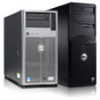Dell PowerEdge XL 5133-4 MXL 10/40GbE Switch IO Module FTOS Command Reference - Page 209
Fetching Dynamic MAC Entries Using SNMP, Displaying Ports in a VLAN using SNMP
 |
View all Dell PowerEdge XL 5133-4 manuals
Add to My Manuals
Save this manual to your list of manuals |
Page 209 highlights
Figure 16-6 shows the output for an Aggregator. All hex pairs are 00, indicating that no ports are assigned to VLAN 10. In Figure 16-7, Port 0/2 is added to VLAN 10 as untagged. And the first hex pair changes from 00 to 04. Figure 16-7. Displaying Ports in a VLAN using SNMP [Dell Force10 system output] FTOS(conf)#do show vlan id 10 Codes: * - Default VLAN, G - GVRP VLANs Q: U - Untagged, T - Tagged x - Dot1x untagged, X - Dot1x tagged G - GVRP tagged, M - Vlan-stack NUM Status Description 10 Inactive Q Ports U Tengig 0/2 [Unix system output] > snmpget -v2c -c mycommunity 10.11.131.185 .1.3.6.1.2.1.17.7.1.4.3.1.2.1107787786 SNMPv2-SMI::mib-2.17.7.1.4.3.1.2.1107787786 = Hex-STRING: 40 00 00 00 00 00 00 00 00 00 00 00 00 00 00 00 00 00 00 00 00 00 00 00 00 00 00 00 00 00 00 00 00 00 00 00 00 00 00 00 00 00 00 00 00 00 00 00 00 00 00 00 00 00 00 00 00 The value 40 is in the first set of 7 hex pairs, indicating that these ports are in Stack Unit 0. The hex value 40 is 0100 0000 in binary. As described above, the left-most position in the string represents Port 1. The next position from the left represents Port 2 and has a value of 1, indicating that Port 0/2 is in VLAN 10. The remaining positions are 0, so those ports are not in the VLAN. Note that the table contains none of the other information provided by the show vlan command, such as port speed or whether the ports are tagged or untagged. Fetching Dynamic MAC Entries Using SNMP The Aggregator supports the RFC 1493 dot1d table for the default VLAN and the dot1q table for all other VLANs. Note: The 802.1q Q-BRIDGE MIB defines VLANs with regard to 802.1d, as 802.1d itself does not define them. As a switchport must belong to a VLAN (the default VLAN or a configured VLAN), all MAC address learned on a switchport are associated with a VLAN. For this reason, the Q-Bridge MIB is used for MAC address query. Moreover, specific to MAC address query, dot1dTpFdbTable is indexed by MAC address only for a single forwarding database, while dot1qTpFdbTable has two indices -VLAN ID and MAC address -to allow for multiple forwarding databases and considering that the same MAC address is learned on multiple VLANs. The VLAN ID is added as the first index so that MAC addresses can be read by VLAN, sorted lexicographically. The MAC address is part of the OID instance, so in this case, lexicographic order is according to the most significant octet. Simple Network Management Protocol (SNMP) | 195















